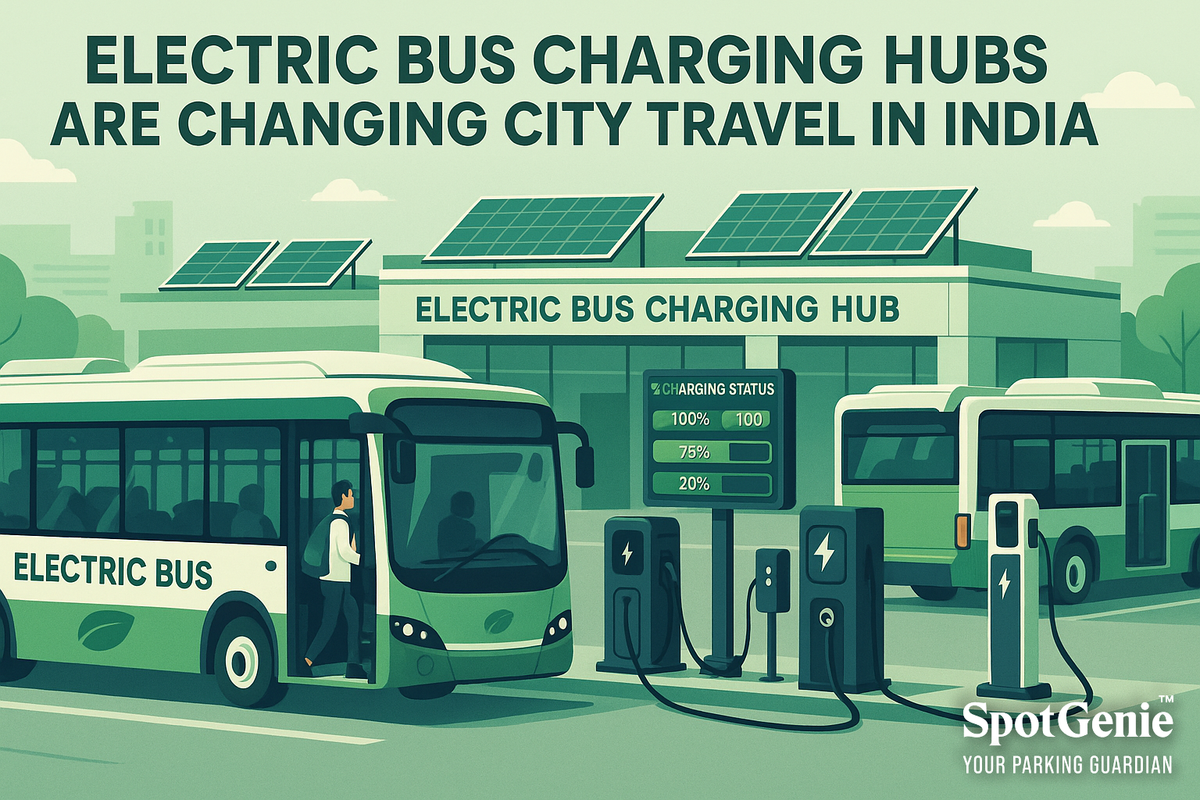Electric Bus Charging Hubs Are Changing City Travel in India
Understand how electric bus charging hubs in India enable greener public transport—spotlight on infrastructure, policy, and city rollouts.

Electric Bus Charging Hubs Are Changing City Travel in India
SpotGenie Gyaan brings you closer to the green mobility revolution—today we plug into the heart of India’s clean commute: electric bus charging hubs.
What Are E-Bus Charging Hubs?
Electric bus charging hubs are specialized locations where public e-buses charge during off-duty hours or in between trips. They range from centralized depots equipped with multiple AC chargers to on-route DC fast-charging points that can top up a bus in under 30 minutes.
These hubs are critical to keeping e-buses running efficiently, ensuring they meet their daily service targets without interruptions.
Government Policy & Funding Support
- FAME II Scheme: Offers capital subsidies to State Transport Undertakings (STUs) for deploying electric buses and installing chargers.
- Delhi EV Policy 2020: Mandates all new buses be electric by 2030, backed by subsidies and infrastructure goals.
- Karnataka & Tamil Nadu: Roll out policies to attract EV ecosystem investments including public charging stations.
City-Specific Rollouts
- Pune: PMPL has deployed AC slow chargers at multiple depots with peak load scheduling to avoid grid stress.
- Bengaluru: BMTC uses fast-charging hubs at terminals like Majestic and Yeshwanthpur, allowing mid-day boosts for high-frequency routes.
- Delhi & Mumbai: Pilot projects include rooftop solar panels on depots and battery energy storage to reduce electricity bills and grid spikes.
Benefits & Operational Insights
- Lower Operational Costs: E-buses cost significantly less per km to operate vs. diesel buses.
- Cleaner Cities: Zero tailpipe emissions help improve urban air quality.
- Reduced Noise Pollution: Quiet electric drives make for a peaceful ride.
- Smart Grid Integration: Time-of-use charging reduces pressure on city power supplies.
Challenges & Essential Requirements
- High upfront cost for setting up chargers and upgrading grid connectivity.
- Space constraints in dense cities to build large charging depots.
- Need for 24/7 maintenance and predictive diagnostics to avoid service disruption.
What Transport Authorities & Commuters Should Know
For Authorities: Plan route electrification in tandem with charging infrastructure. Use software to schedule bus-charging based on real-time demand.
For Commuters: E-buses offer cleaner, quieter, and more comfortable rides. Supporting these services contributes to a healthier city for all.
Conclusion
Electric buses aren’t just about zero emissions—they represent a smarter, smoother, and more sustainable way of urban living. With cities building charging hubs and governments offering strong policy backing, India’s public transport is powering ahead into a greener future.
Next time you spot an electric bus in your city, know that there's a powerful ecosystem behind it—charging quietly, running clean, and changing how India moves.
Follow us on:
🅾 Instagram |
ⓕ Facebook |
𝕏 X |
▶️ YouTube |
🟢 WhatsApp



